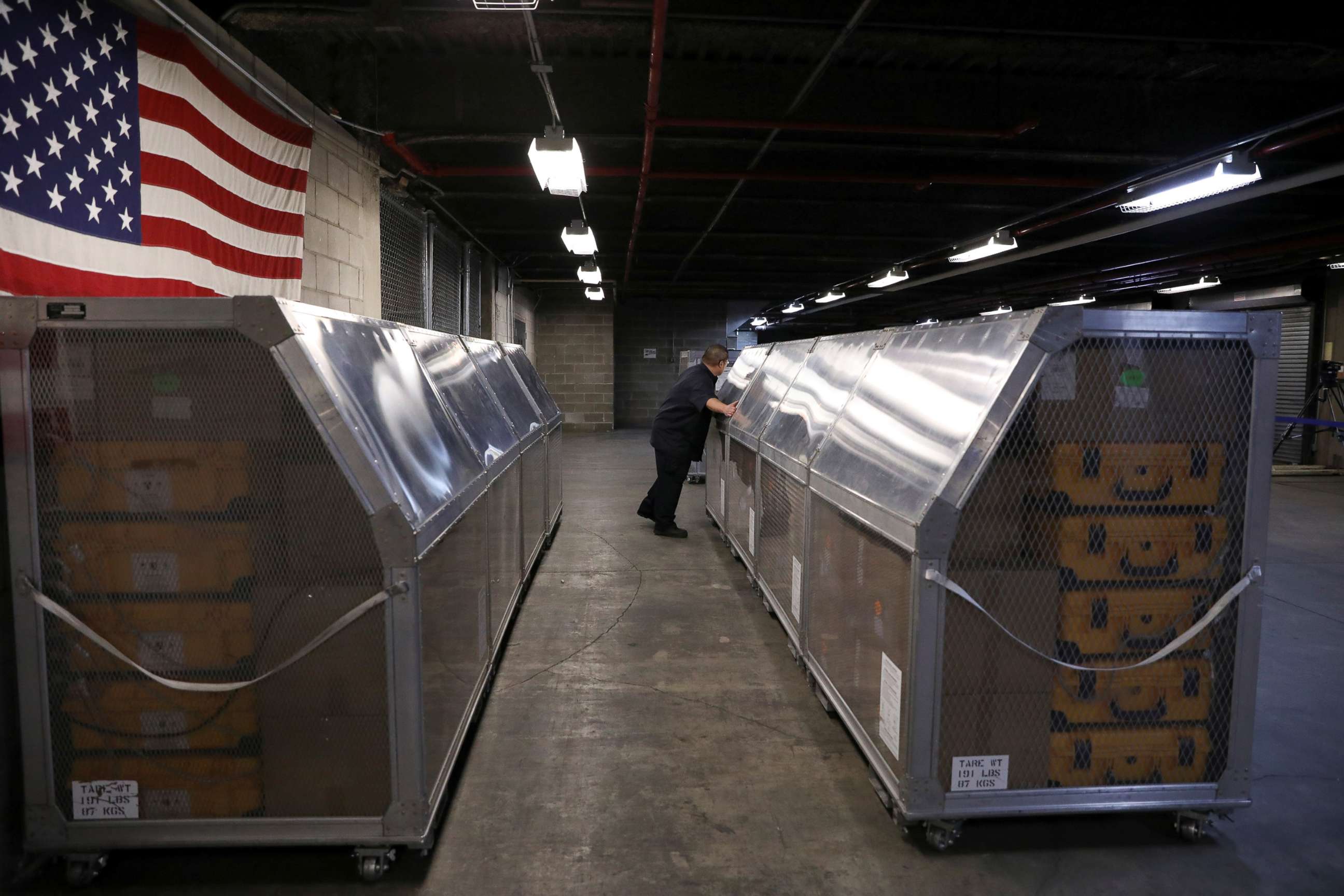How anesthesia machines can help hospitals with ventilator shortages fight coronavirus
Officials have pointed to the anesthesia machines as a resource for hospitals.
Anticipating ongoing shortages of ventilator machines as the coronavirus continues to spread across the country, states and hospitals are preparing to convert anesthesia machines for use on COVID-19 patients in need of breathing assistance.
The effort to utilize anesthesia gas machines, approved by the Food and Drug Administration earlier this week, could make tens of thousands of additional machines available for the fight against the coronavirus.
The mechanical ventilators in such short supply around the world support critically-ill COVID-19 patients by helping them breathe, using a pump and a breathing tube to support weakened lung function.
Tune into ABC at 1 p.m. ET and ABC News Live at 4 p.m. ET every weekday for special coverage of the novel coronavirus with the full ABC News team, including the latest news, context and analysis.
Using computer-driven technology, the most advanced models include sophisticated software that provides doctors with immediate feedback on a patient’s breathing and lung capacity.
Anesthesia machines are constructed to deliver oxygen and gas mixtures to place patients under anesthesia during surgical procedures, but can be modified to aid patients struggling to breathe on their own.
“They provide the basic components of ventilation, but they don’t provide the alarms, monitoring and sophistication that critical care ventilators do,” Tim Myers, a registered respiratory therapist and chief business officer for the American Association of Respiratory Care, told ABC News.
But with roughly 150,000 - 200,000 ventilators in the United States – far short of the one million breathing machines that could be needed to treat the coronavirus – the more basic anesthesia machines could make a difference in hospitals running low on the lifesaving machines, which are among the most effective tools available to help severely-ill COVID-19 patients struggling to breathe.

"You have a ready-made solution that can offset a large part of this problem without needing to rely on ventilator manufacturers ramping up production,” Dr. Lew Kaplan, President of Society of Critical Care Medicine, told ABC News.
State and federal officials have increasingly pointed to the anesthesia machines as a resource for hospitals.
“We have determined several weeks ago that the devices that anesthesiologists use for outpatient surgery can be converted with the change of a single vent to a very useful ventilator,” Vice President Mike Pence said Wednesday in the daily COVID-19 task force press briefing. “We literally believe there are tens of thousands of ventilators that can be converted now.”
In addition to the machines, the postponement of elective surgeries across the country has helped to free up anesthesiologists and nurse anesthetists who can best operate them, Dr. Deborah Birx, the coordinator of the White House coronavirus task force, said Wednesday.
What to know about the novel coronavirus:
- How it started and how to protect yourself: coronavirus explained
- What to do if you have symptoms: coronavirus symptoms
- Tracking the spread in the US and worldwide: coronavirus map
“Changing that elective surgery piece over a week ago has freed up a lot of additional resources,” she said.
There are approximately 70,000 anesthesia machines in the United States, according to Dr. Jeffrey Feldman, an attending anesthesiologist at Children’s Hospital of Philadelphia, who is also an officer in the American Society of Anesthesiologists – including roughly 30,000 machines in other medical facilities.
Along with anesthesia machines, new techniques to put multiple patients on single ventilator units have emerged as potential options for hospitals preparing to treat a surge in coronavirus patients with a limited number of ventilators.
Gov. Andrew Cuomo on Thursday approved the use of so-called split-ventilation in New York State, to allow hospitals to put two patients on one ventilator, a protocol developed by New York Presbyterian Hospital.
But the public health community is divided on the emergency technique: A group of seven medical organizations came out against sharing ventilators, warning in a statement that it could lead to “poor outcomes and high mortality rates for all patients cohorted.”
“It diverts our attention from things that we know will be effective,” Feldman said, pointing to anesthesia machines and manual ventilation.
“When it comes to saying, ‘How am I going to keep this patient alive,’ all of the anesthesia machines should be able to do that.”



